Subfamily Phasianinae Scientific name Crossoptilon crossoptilon Higher classification Crossoptilon | Genus Crossoptilon Phylum Chordata Rank Species | |
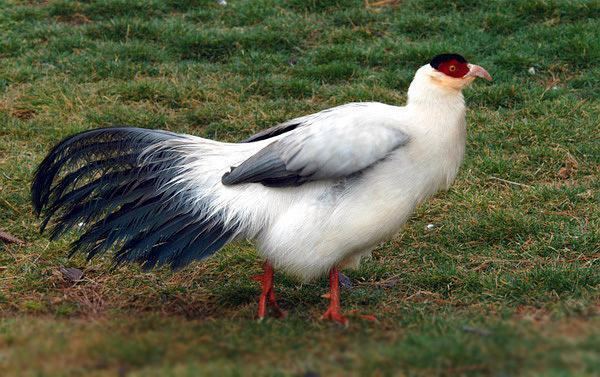 | ||
Similar Crossoptilon, Blue eared pheasant, Brown eared pheasant, Bird, Tibetan eared pheasant | ||
White eared pheasants at chriben pheasantry in u k from lindsay crisp
White eared pheasants (Crossoptilon crossoptilon) are a species of "eared pheasants" that get their name because they are white and have the prominent ear tufts of the genus, not because they have white ears. The indigenous people of Himalaya call them shagga, meaning snow fowl. These gregarious birds live in large flocks, foraging on alpine meadows close to or above the snowline throughout the year. C. crossoptilon are found in China, Qinghai, Sichuan, Yunnan and Tibet, where they tend to inhabit mixed forests and can be found around Buddhist monasteries.
Contents
- White eared pheasants at chriben pheasantry in u k from lindsay crisp
- White eared pheasant crossoptilon crossoptilon still photos only
- Flight
- Diet
- Subspecies
- Reproduction
- Conservation Status
- References
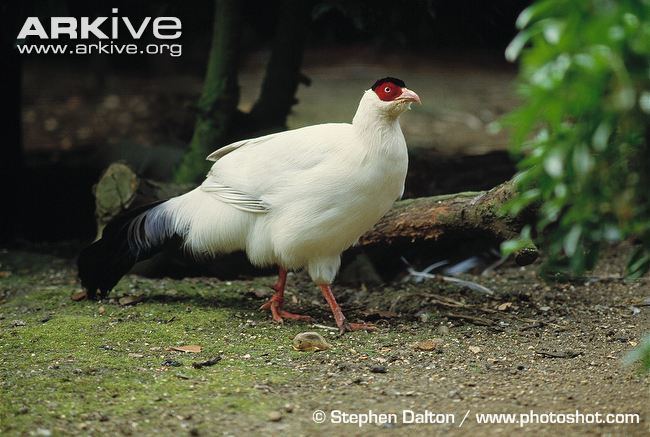
White eared pheasant crossoptilon crossoptilon still photos only
Flight
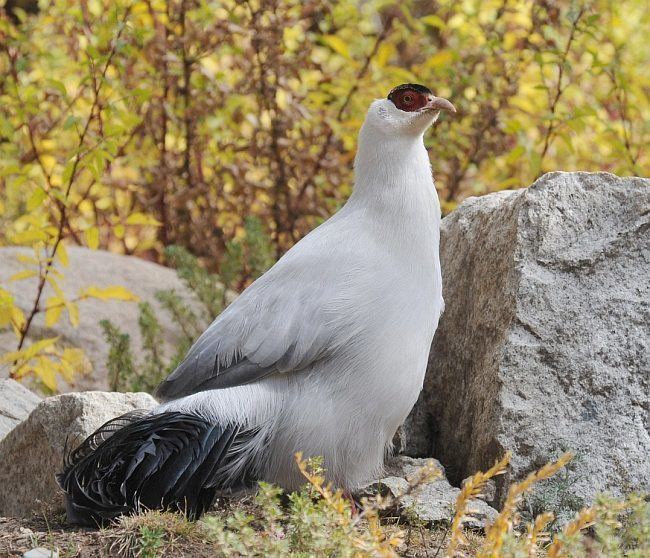
White eared pheasants tend to fly a great deal more than their close relatives, such as the Brown eared pheasant (Crossoptilon mantchuricum) and the blue eared pheasant (Crossoptilon auritum). All three ecological species are capable of hovering or volplaning over deep snow. They do this with the aid of their great, wide tails. Eared pheasants move across deep snow by whirring their wings and fluttering close to the ground, and supporting their weight on their retrices. Eared pheasant flight was often described as poor by the hunter collectors of the 18th century who used dogs to flush the birds from the ground for shooting. Eared pheasants do not waste their energy on flying when quadrupeds prey on them because they have adapted many defensive escape behaviors that do not require flight. They have a high aptitude for sustained flight—movements that only take them a few hundred yards at a time but in the snowy seasons this is very useful. This ability to cover large areas by flight is reminiscent of ptarmigans, sage grouse, and Syrmaticus pheasants, all of which inhabit snowy regions and use sustained flight for feeding during winter months. characteristic of these species and C. crossoptilon is the lack of a prominent tailing wing notch.
Diet
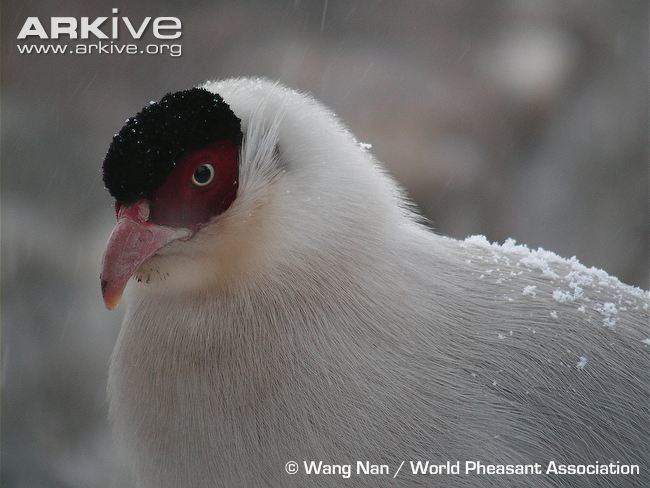
C. crossoptilon forage for tubers and roots in alpine meadows often in the company of yaks or other hoof stock. In winter, white eared pheasants subsist on pine needles, juniper berries, wolf berries, and the desiccated seed pods of iris, lily and allium. When hard pressed during the most severe winter storms which may blow for weeks at a time, eared pheasants may subsist upon pine pitch and deer, rabbit and yak dung.
Subspecies
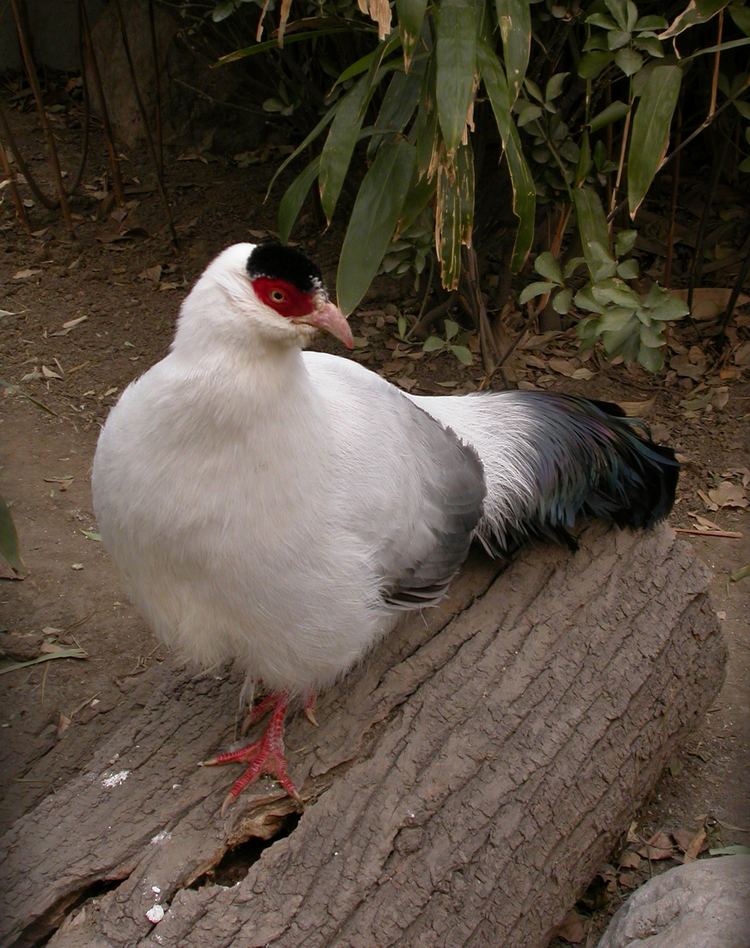
While all known forms of white eared pheasants are very similar in phenotype, there are behavioral and genetic differences which suggest that there is much to learn about their systematic and behavioral ecology.

The Szechuan white eared pheasant, (Crossoptilon crossoptilon crossoptilon), is a galliform bird native to the Szechuan region of China. It is a subspecies of white eared pheasant. This form inhabits high altitudes along exposed rockscapes and may descend to old growth forests in winter. Its wings are dark-grey or violet.
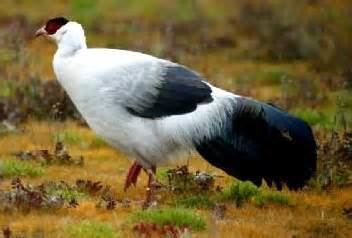
This bird is predominantly white, including, as its name suggests, white ear tuffs, but is not as white in as many places of its body as its close relatives the Tibetan white eared pheasant (C. c. drouyni) and the Yunnan white eared pheasant (C. c. lichiangnse). It has black tail feathers and wingtips and as well as a patch of black at the top of its head. The primary feathers range from dark grey to brown. The part of its face not covered by feathers has red skin.
Reproduction
The Szechuan white eared pheasant will not mate until it is two years old, then it will go into a heated breeding frenzy around the end of April. The breeding will last until June and these pheasants will produce about 4 to 7 eggs per clutch. The incubation period for their eggs is 24–25 days.
Although there is not much sexual dimorphism among the Szechuan white eared pheasant, the cocks are considerably larger than the hens. It can reach a length of 86–96 cm long and weighs 1400–2050 g for females and 2350–2750 g for males.
Conservation Status
Szechuan white eared pheasants have now become a near threatened species. Human development and encroaching on its habitat in agricultural China has reduced the range of the species, and hunting of these pheasants for food have threatened their numbers severely.
It is estimated that 10,000-50,000 individuals exist in the wild today. C. crossoptilon is protected under Buddhist culture.
